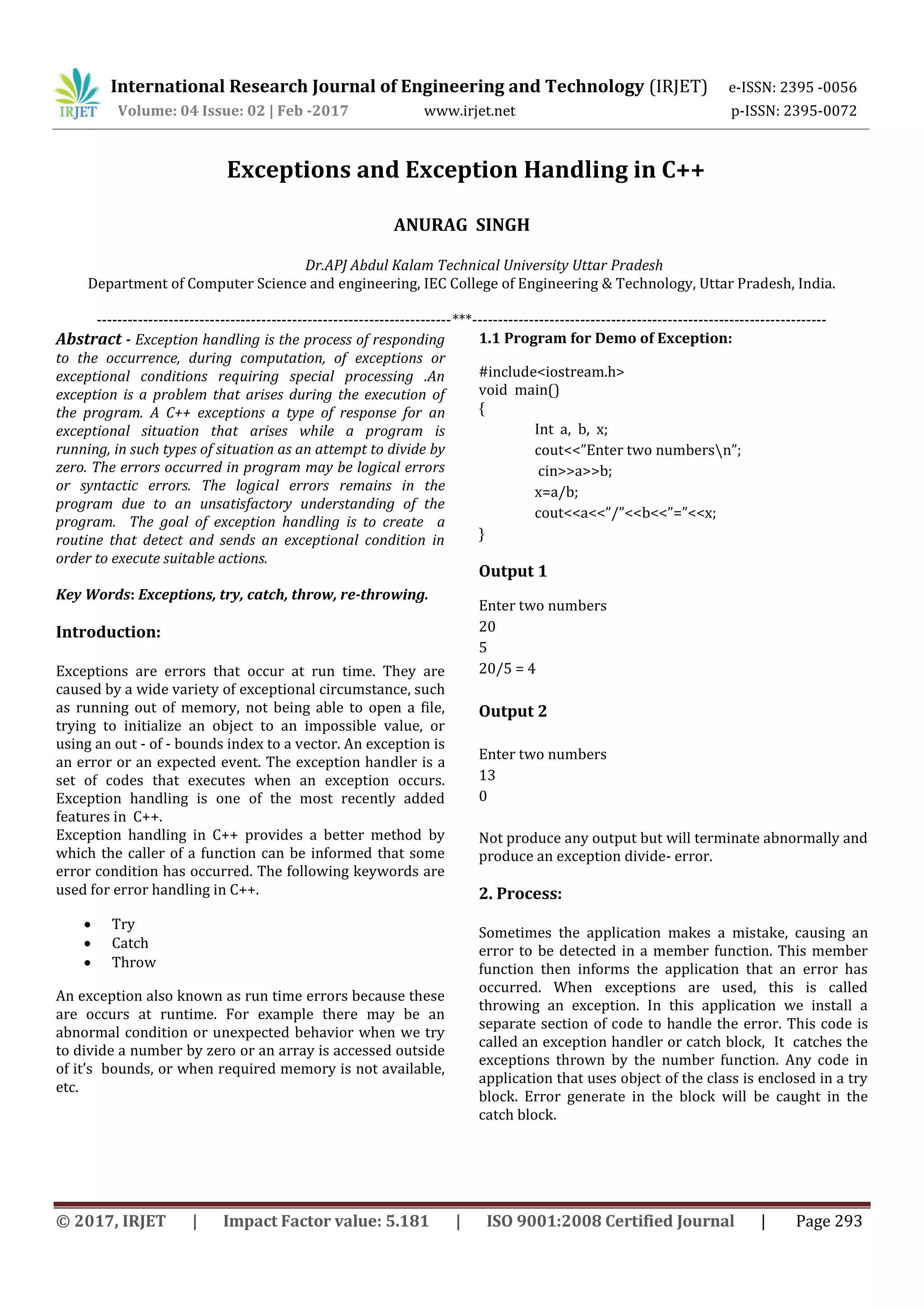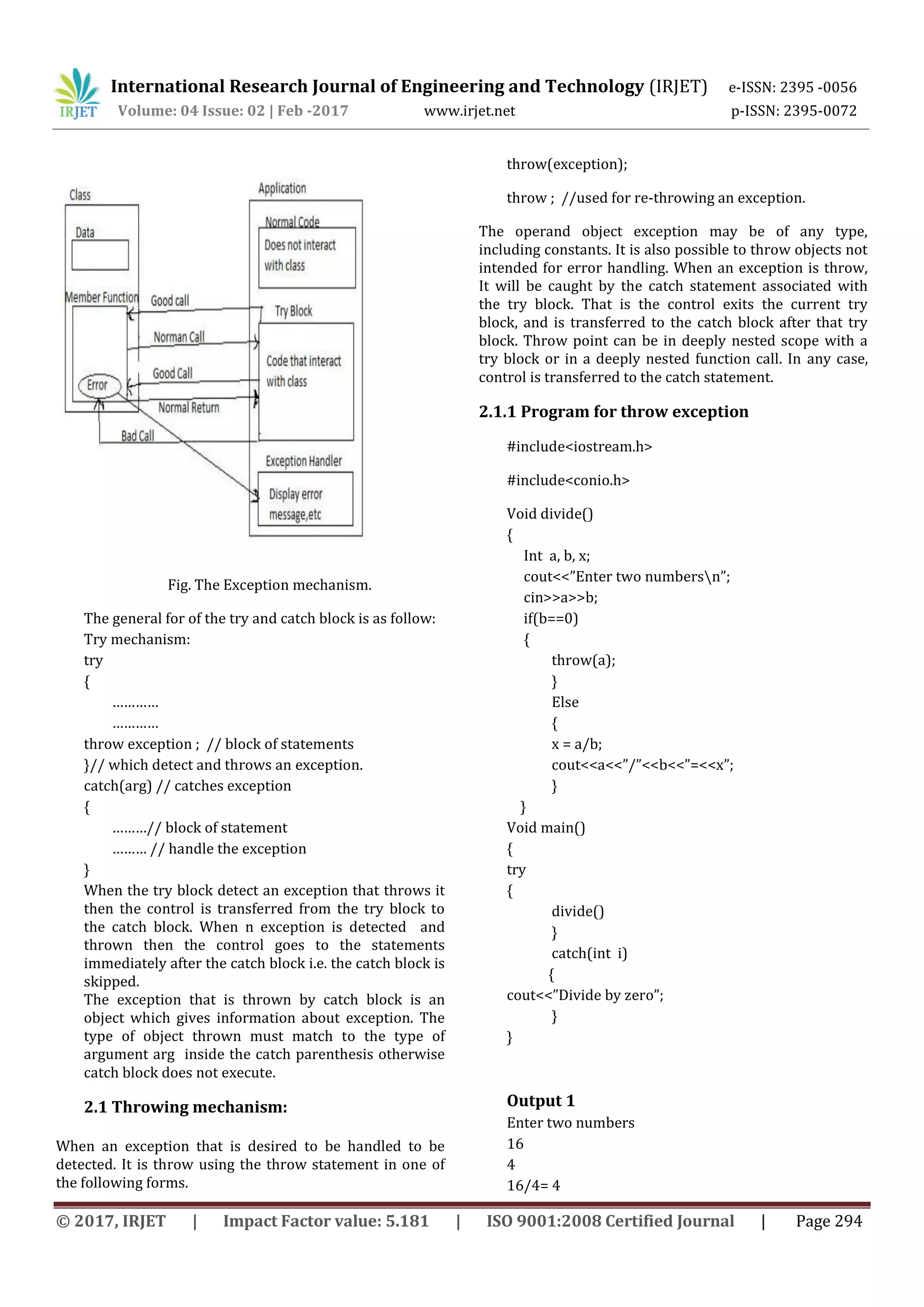This document discusses exceptions and exception handling in C++. It begins with an introduction explaining that exceptions are errors that occur during runtime due to unexpected conditions like dividing by zero. It then explains the key concepts of exceptions handling in C++ using try, catch, and throw keywords. Try blocks contain code that may throw exceptions. Catch blocks contain code to handle exceptions. Exceptions are thrown using throw. The document provides examples to demonstrate exception handling mechanisms like catching multiple exception types, and re-throwing exceptions. It also discusses specifying the types of exceptions a function can throw.



